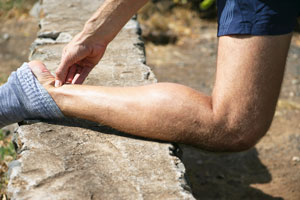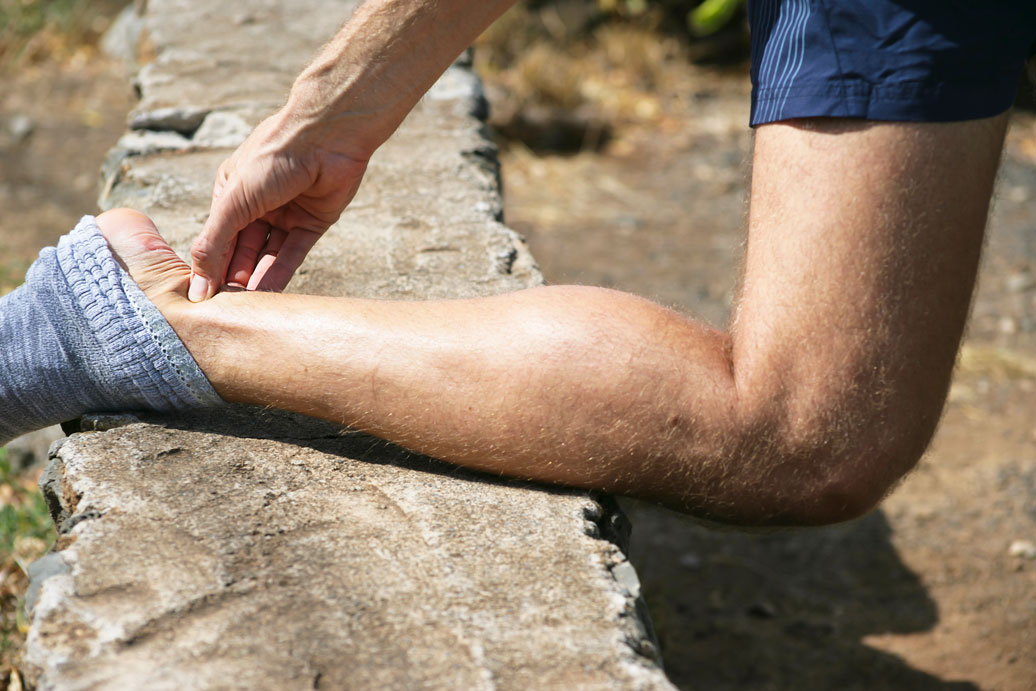
Achilles tendinopathy is characterised by pain in the Achilles tendon which is located at the back of the ankle. Pain can be felt during the aggravating activity, but often has a 12-24 (and sometimes 48) hour delay, with pain often felt the morning after the inciting activity. Achilles tendinopathy typically occurs when the tendon is exposed to an unaccustomed load. This can be the result of over training, training error, commencement of a new activity, or even return to a previous level of activity following a period of rest.
Achilles tendinopathy was previously referred to as Achilles ‘tendonitis’, implying that the underlying process was inflammatory in nature. Many recent studies have disproved this theory, instead finding that the problem lies in the balance between tendon load and tendon repair capacity. Achilles tendinopathy results when loading of the tendon outstrips the tendons capacity for repair. This can occur when the tendon load is increased (e.g. increased training load), the opportunity for repair is reduced (e.g. insufficient rest), or the tendons capacity for repair is reduced (e.g. systemic factors such as smoking). Biomechanical factors such as poor technique or abnormal foot mechanics etc. may also pre-dispose to Achilles tendinopathy by increasing tendon load via reduced biomechanical efficiency.
Effective treatment of Achilles tendinopathy is multifactorial. Firstly, it will involve identification and correction of any contributing biomechanical or training related factors. Secondly, it will involve a tendon loading program that provides the tendon with a consistent but manageable load to facilitate tendon adaptation and a return to the desired level of function. Consistency of appropriate load is the key – and is often where people come unstuck – too much or too little will not have the desired effect. The amount and type of load has to be just right, and tailored to suit the individual and their task requirements.

